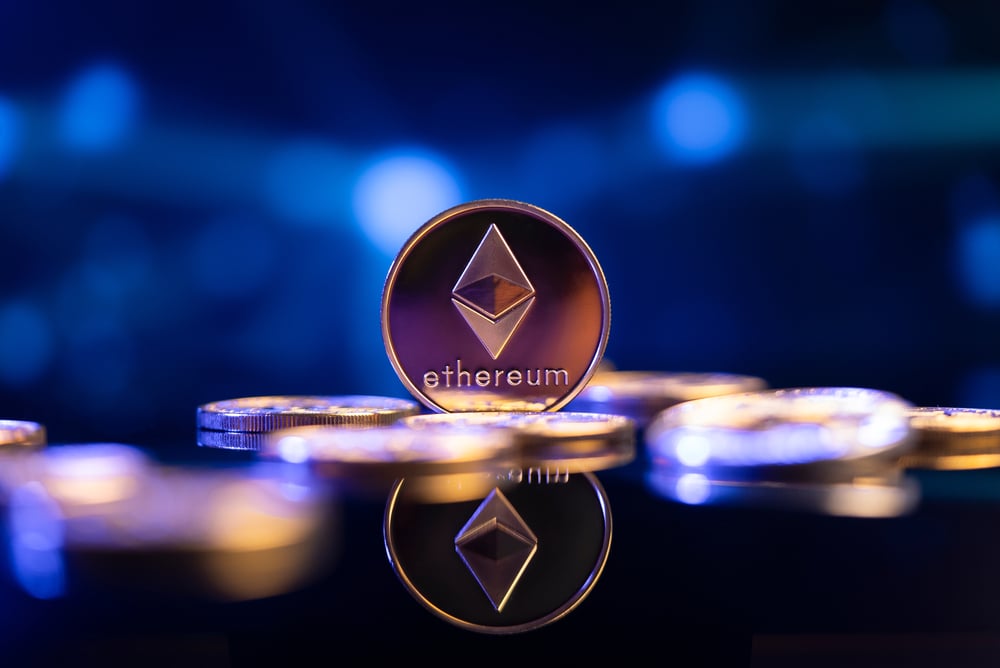The era of the new Ethereum 2.0 technology. Can it lower your gas bill?

What is the Ethereum 2.0 update?
Ethereum 2.0 (Eth2 or Serenity) is a long-planned update to the Ethereum network, which is expected to result in significant user improvements combined with increased security, scalability and lower power consumption.
The network upgrade officially began in December 2020 and is planned to be phased in over several years.
The key points of the upgrade lie in the significant reduction of power consumption due to the change of the consensus algorithm from proof-of-work (PoW) to proof-of-stake (PoS) and the implementation of the concept of blockchains – shardchains. The idea of shard chains has been around in the blockchain world for some time and will be tested in the new version.
What is Gas in Ethereum?
Gas in Ethereum is the unit of measure of computational work to perform transactions or smart contracts in the Ethereum network, in other words, this is Etherium’s internal currency.
Importantly, different types of transactions require different amounts of gas, just as with electricity or gasoline: powerful equipment will consume more compared to weaker equipment.
For example, it would take 21,000 gas to transfer ETH from one user’s wallet to another. Whereas creating or successfully executing a smart contract will require a completely different amount of gas, as the miner performing the transaction spends their time, electricity and power to execute the codes. So the payment depends on the complexity of the transaction, which means the more complex the transaction, the more gas.
This system is similar to using kilowatts to measure electricity in a house. The amount of electricity spent is not measured immediately in rubles, instead, the bill is billed per kWh.
Since the network currently processes only 15-20 transactions per second, compared to, for example, Visa, which processes 15,000 transactions per second, which in turn leads to high fees and processing delays, the Ethereum 2.0 update poses a non-trivial challenge to solve this problem by reducing the amount of gas required to conduct transactions and increasing security.
How is the gas price determined in Ethereum?
Commissions help fund miners and regulate transactions. Without them, confirmations on the network would be suspended and Ethereum would not be able to operate.
Commissions are paid in Ethereum coins. The cost of gas in the Ethereum network is specified in Gwei, which is equal to 0.000000001 ETH (1 billionth of ETH) and is a variable value that depends on the number of accumulated transactions and the number of miners as well as decentralized applications (DApps) working at the same time.
To determine the current value of blockchain transaction fees, users use special services: ETH Gas Station, Gas Now. Gas trackers show how much it will cost to process action on the network at the current time and how long it will take for an operation to be included in the blockchain.
To determine the fees, you need to multiply 50 gwei by 0.000000001 ETH and the Gas limit (the maximum amount of gas that can be spent on a transaction).
Ethereum’s high gas fee and its impact on platform scalability
The purpose of the Ethereum 2.0 update
The key point of the Ethereum 2.0 platform update is to improve performance and reduce resource costs. The main reason for low scalability is that every node in the network processes every transaction. And nodes play an important role in the network, performing verification that the work of the miners is valid.
Since the Ethereum 2.0 update is a worldwide project split into 3 phases and takes a long time to complete, the full effects will be evident much later, but for now, the anticipated uses of Ethereum 2.0 include such bonuses as increased privacy and the ability to store large amounts of data, the launch of Ethereum tokens which will allow new projects to raise funds and launch their own tokens in the Ethereum network and many others.
Although the update is still underway, the benefits are significant and will affect the subsequent use of blockchain technology by businesses and individuals in the future.
The growing popularity of the Ethereum platform
Following the release of Ethereum 2.0, analysts predict an increase in the popularity of the blockchain network.
The Ethereum 2.0 framework will see a number of important updates that are designed to address scalability issues, and the accompanying increase in security and efficiency for all interested users.
Already today, Ethereum is doing its best to outperform its competitors, Bitcoin for example, and is therefore working on fixing significant flaws.
Most Defi services are based on Ethereum. According to analysts, Ethereum currently accounts for 70% of all DeFi transactions in the cryptocurrency market. There is also a growing interest in NFT – tokens that are issued on Ethereum.
The number of transactions in the Ethereum network
So far, there are between 1.1 and 1.5 million unique transactions per day on the Ethereum network.
The Ethereum 2.0 update is predicted to allow these numbers to grow exponentially since significantly more transactions per day will be processed. Today, Ethereum only processes 15 to 20 transactions per second at full capacity.
The goal of the Ethereum 2.0 update is to increase this exponentially and bring it to the 150,000 mark by the time the updates are fully implemented. When this happens, Ethereum’s popularity will soar due to speed and security.
Addressing scalability and high gas charges in Ethereum 2.0
High gas charges are a significant problem for Ethereum, which brings the urgent need for scalability to the forefront.
Recently, solutions are emerging that help reduces Ethereum congestion and lower transaction costs primarily by moving from the PoW consensus mechanism to the PoS model and implementing shard chains.
Right now Ethereum has a single blockchain consisting of one chain with consecutive blocks. This is secure but very slow and inefficient. With the introduction of sharding, this blockchain is split, allowing transactions to be processed in parallel chains (sidechains) rather than sequential ones. This speeds up the process and reduces hardware requirements, making it easier to increase volumes.
In the meantime, how do you spend less gas on Ethereum?
There are currently several tricks for lowering costs when paying for gas in Ethereum.
- Using batch processing wallets, batch processing is a feature offered by some wallets that allows you to group multiple transactions into one and reduce the amount of gas.
- ERC20 tokens are the most commonly used tokens in Ethereum, designed to pay for various features that can be used in place of ETH when paying for gas. They often have much lower transaction fees than ETH.
- Gas Price Calculator. The price of gas is variable, use a price calculator to ensure you get the best possible price for your transaction.
- Gas Tracker. In response to high commissions, there is a fairly handy service with a real-time gas price tracker on Ethereum. This will help you save money and time on transactions when the Ethereum network is overloaded and therefore becomes more expensive and slower.
- Use a gas station: A gas station is a website that allows you to compare gas prices for different ETH wallets and find the best option for your request.
At this point, until Ethereum 2.0 completes a full update, you can significantly reduce the cost of gas in your Ethereum platform work.
Just as effectively and safely, you can buy Ethereum mining and stacking contracts from cloud mining provider Hashmart.io.

